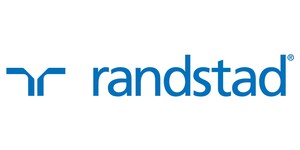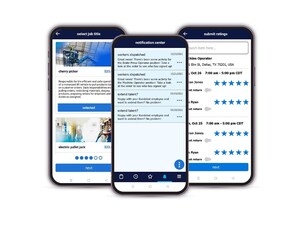U.S. Workers Have Varied Confidence Levels in Economic Strength and Job Market
The Randstad Employee Confidence Index finds workers' outlook varies based on region
ATLANTA, June 3, 2014 /PRNewswire/ -- Mirroring many of today's economists, U.S. workers appear to be divided on their opinions about key aspects of the economy, while their overall confidence level remains essentially unchanged. According to the most recent Randstad U.S. Employee Confidence Index, workers are fairly equally split when it comes to the overall strength of the economy, with one-third (33%) saying it is getting stronger, another third (33%) indicating it is staying the same, and another 35 percent believing the economy is getting weaker. Meanwhile, the overall employee confidence Index fell only slightly in May to 55.5, a 1.0 point decrease from the prior month.
In addition, workers have similarly wide-ranging views on the overall job market. The Index found while more than one-quarter (26%) of workers believe there are more jobs available, 46 percent of employees say there are fewer jobs available. When it comes to the likelihood of looking for a new job in the next 12 months, 34 percent of employees feel it is likely whereas 51 percent indicate it is not likely.
"An overall tone of cautious optimism and varied interpretations of key economic measures among economists may be contributing to mixed degrees of confidence amid today's workforce," said Jim Link, Chief HR Officer, Randstad North America. "While recent labor numbers have been increasingly higher and more encouraging, they may not have truly materialized in any significant way for most workers. Furthermore, there have been numerous false starts for jobs and the economy over the last five years, therefore tempering any immediate enthusiasm surrounding positive job reports.
"Many employers still have a degree of uncertainty about a sustained economic recovery, which may be fueling a stop-and-start hiring pattern. If and when the economy begins adding 288,000 jobs every month, as it did last month, hesitations about aggressive hiring and investments will likely dissipate. Until then, we would anticipate both economists and workers will continue a steady, reserved degree of optimism."
The May research was conducted online by Harris Poll on behalf of Randstad among 1,138 employed U.S. adults ages 18 and older. Randstad, the second largest staffing and HR services firm in the world, has been tracking workforce trends and publishing the U.S. Employee Confidence Index since 2004.
Location Matters… When it Comes to Outlook on Economy, Jobs
According to the Randstad Employee Confidence Index report, worker confidence levels and beliefs about the job market vary greatly depending on the region in which they live and work. The key findings include:
- Workers living in the West are the most optimistic when it comes to the strength of the economy and the job market. Employees from this region are the most likely to report the economy is getting stronger (38%) and report the highest confidence in their ability to find a new job (53%).
- Northeast employees report the lowest confidence levels in their own job security. The Index found 21 percent of workers in this region say it is likely they will lose their job in the next 12 months, compared to 15 percent of U.S. workers overall. Also, a full 36 percent of Northeast workers say it is likely they will look for another job in the next year.
- However, when it comes to job stability, Midwest workers seem to be the most secure. The Index found workers in this region report the highest level of job security, with 79 percent indicating it is unlikely they will lose their job in the next 12 months. Further, employees in the Midwest are the most unlikely to look for a new job in the next year (56%) compared to other regions.
- Workers in the South are the least confident in the economy and other job-related factors. In fact, only 27 percent of workers in the South believe the economy is getting stronger, and they are the least confident in their ability to find a new job compared to other regions. They are also the least optimistic in the future of their current employer, with only 53 percent indicating they have confidence.
| Employee Confidence Index |
||||||||||
| Employee |
Macro |
Personal |
Transition |
Security |
||||||
| MONTH |
Confidence |
Confidence |
Confidence |
Index |
Index |
|||||
| May-14 |
55.5 |
44.6 |
66.4 |
34 |
71 |
|||||
| Apr-14 |
56.5 |
43.8 |
69.3 |
36 |
72 |
|||||
| Mar-14 |
57.1 |
45.6 |
68.6 |
33 |
77 |
|||||
| Feb-14 |
54 |
42.2 |
65.9 |
36 |
72 |
|||||
| Jan-14 |
56.7 |
44.9 |
68.5 |
32 |
71 |
|||||
| Dec-13 |
55.2 |
43.7 |
66.7 |
36 |
70 |
|||||
| Nov-13 |
54.5 |
41.2 |
67.8 |
34 |
69 |
|||||
| Oct-13 |
51.5 |
34.8 |
68.3 |
37 |
71 |
|||||
| Sep-13 |
55.7 |
44.7 |
66.7 |
36 |
76 |
|||||
| Aug-13 |
58 |
47.3 |
68.7 |
32 |
74 |
|||||
| Jul-13 |
56.3 |
44.3 |
68.3 |
36 |
72 |
|||||
| Jun-13 |
56.8 |
46.5 |
67.1 |
36 |
72 |
|||||
| May-13 |
54.8 |
42.6 |
67.1 |
37 |
69 |
|||||
| Apr-13 |
57 |
46.8 |
67.2 |
35 |
69 |
|||||
| Mar-13 |
53.9 |
40.1 |
67.8 |
33 |
73 |
|||||
| Feb-13 |
53.5 |
42.9 |
64.1 |
37 |
72 |
|||||
| Jan-13 |
52.1 |
38.3 |
65.8 |
33 |
72 |
|||||
About Randstad US
Randstad US is a wholly owned subsidiary of Randstad Holding nv, a $22.0 billion global provider of HR services. As the third largest staffing organization in the U.S., Randstad holds top positions in permanent placement, office and administrative, IT and accounting and finance. From professional services, commercial staffing, recruitment process outsourcing, to managed services and more, Randstad delivers a comprehensive range of temporary, temporary-to-hire, permanent placement and outsourced placement services. With its 5,324 employment experts, Randstad puts an average of approximately 100,000 people to work in the U.S. each week, through its network of nearly 1,000 branches and client-dedicated locations.
Learn more at www.randstadusa.com and access Randstad's panoramic U.S. thought leadership knowledge center through its Workforce360 site that offers valuable insight into the latest economic indicators and HR trends shaping the world of work.
Methodology
This 2014 Randstad Employment Tracker was conducted online within the United States by Harris Poll on behalf of Randstad between May 8-12, 2014 among a U.S. sample of 1,138 employed adults, aged 18 years and older. Results were weighted as needed for age, sex, race/ethnicity, income, education, and region. Propensity score weighting was also used to adjust for respondents' propensity to be online.
All sample surveys and polls, whether or not they use probability sampling, are subject to multiple sources of error which are most often not possible to quantify or estimate, including sampling error, coverage error, error associated with nonresponse, error associated with question wording and response options, and post-survey weighting and adjustments. Therefore, the words "margin of error" are avoided as they are misleading. All that can be calculated are different possible sampling errors with different probabilities for pure, unweighted, random samples with 100% response rates. These are only theoretical because no published polls come close to this ideal.
Respondents for this survey were selected from among those who have agreed to participate in our surveys. The data have been weighted to reflect the composition of the adult population. Because the sample is based on those who agreed to participate in the online panel, no estimates of theoretical sampling error can be calculated.
About Nielsen & The Harris Poll
On February 3, 2014, Nielsen acquired Harris Interactive and The Harris Poll. Nielsen Holdings N.V. is a global information and measurement company with leading market positions in marketing and consumer information, television and other media measurement, online intelligence and mobile measurement. Nielsen has a presence in approximately 100 countries, with headquarters in New York, USA and Diemen, the Netherlands. For more information, visit www.nielsen.com.
SOURCE Randstad US
WANT YOUR COMPANY'S NEWS FEATURED ON PRNEWSWIRE.COM?
Newsrooms &
Influencers
Digital Media
Outlets
Journalists
Opted In






Share this article